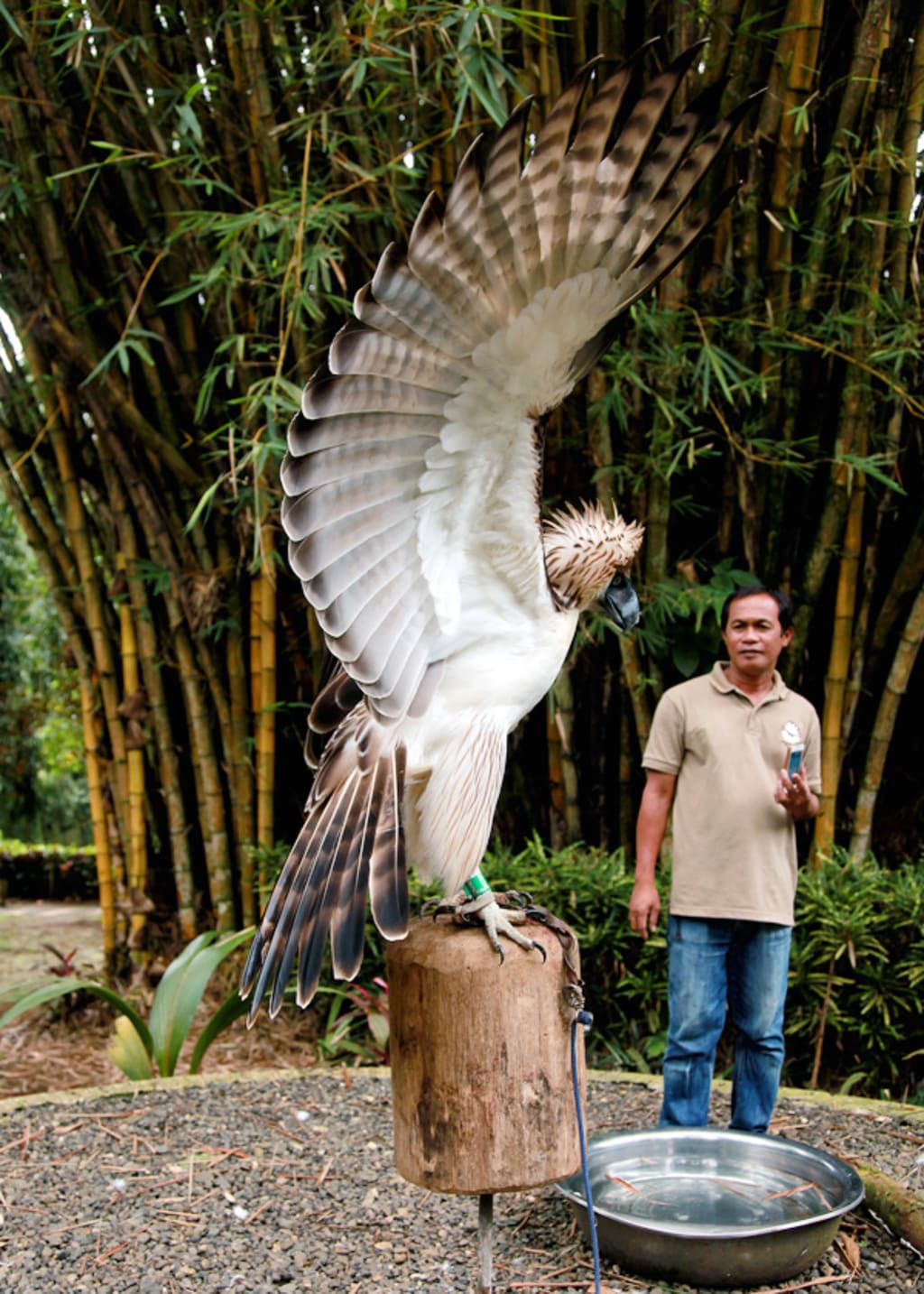Biggest Eagle
The Majestic Philippine Eagle

The Philippine eagle (Pithecophaga jefferyi) is a large and powerful bird of prey that is endemic to the Philippines. It is also known as the monkey-eating eagle due to its preference for preying on monkeys. The Philippine eagle is one of the world's rarest and most powerful birds of prey and is the national bird of the Philippines.
The Philippine eagle is a large bird, measuring up to 1 meter in length and weighing up to 6 kilograms. Its wingspan can reach up to 2 meters in length. The Philippine eagle has a brownish-black upper body, a white underside, and a prominent crest of feathers on its head. It also has distinctive yellow eyes and a yellow-tipped beak.
The Philippine eagle is an apex predator in its environment and preys on a variety of animals, including monkeys, civets, snakes, and monitor lizards. It uses its powerful talons to grasp and kill its prey, and can carry its prey back to its nest for consumption. The Philippine eagle builds its nest in the high branches of large trees, usually near the edge of the forest canopy.
The Philippine eagle is found only in the forests of the Philippines, primarily on the islands of Luzon, Samar, Leyte and Mindanao. Its population is estimated to be around 600-1000 individuals, and it is considered critically endangered due to habitat destruction and illegal hunting. The Philippine eagle is protected by law, and conservation efforts are being undertaken to conserve the species.
The Philippine eagle is a symbol of national pride in the Philippines, and it is featured on the Philippine peso coin and the Philippine flag. It is also featured on the seal of the Philippine Air Force, as a symbol of power and strength.
The Philippine eagle is an important part of the Philippine ecosystem and plays a vital role in maintaining the health of the forests. It is also an important part of the culture of the Philippines, and is a symbol of resilience and strength.
The Philippine eagle is one of the most majestic and powerful birds of prey found in the Philippines. It is the national bird of the country and one of the rarest and most endangered raptors in the world. This bird of prey is known for its remarkable size and strength and is considered a symbol of national pride.
The Philippine eagle is an impressive bird with a length of up to one meter and a wingspan of over two meters. Its body is covered in brown feathers with white stripes and its head is crowned with a large crest of feathers. Its beak is massive, yellowish-gray and curved, and its feet are yellowish-brown. Its eyes are yellow and it has powerful talons.
The Philippine eagle is a powerful hunter and feeds mostly on small mammals, such as squirrels, monkeys, and other birds. It also eats snakes, lizards, and other large prey. It is an adept hunter, capable of taking down larger prey from great heights.
The Philippine eagle is found only in the Philippines and is considered a threatened species. It is estimated that there are less than 400 mating pairs of Philippine eagles in the wild. The bird is threatened by illegal hunting and habitat destruction. The Philippine government has taken steps to protect the species, such as making hunting and possession of it illegal.
The Philippine eagle is an important part of the country’s culture and is seen as a symbol of national pride. It has been featured in numerous works of art and literature and is used as a symbol of strength and courage. The bird is also honored in festivals and ceremonies throughout the country.
The Philippine eagle is an impressive bird of prey that has become a symbol of national pride for the Philippines. It is a powerful hunter and a majestic creature, and its existence is essential for the preservation of the country’s biodiversity. It is one of the rarest and most endangered raptors in the world and its protection is of utmost importance.






Comments
There are no comments for this story
Be the first to respond and start the conversation.